 (Photo Credit: Erica Hallock)
(Photo Credit: Erica Hallock)
A Reminder …
Start Early Washington publishes “Notes From Olympia” periodically throughout the legislative interim. During this time, we are replacing trivia with “deeper dives,” looking at innovations and issues that intersect with policy. This edition’s deep dive focuses on recommendations the Home Visiting Advisory Committee recently submitted to the Legislature and the Department of Children, Youth and Families to improve equity in the system, ensure a skilled and sustainable workforce and serve additional families.
A Look at the State’s Revenue Picture
Two important updates impacting our state’s budget outlook were released in June – the first being the caseload forecast (projecting the state’s spending commitments for entitlement programs) and the other is the revenue forecast (projecting how much money the state has available to spend).
Caseload Forecast
The June 15 Caseload Forecast provided updated projections from the last forecast in February related to a number of state programs. These include projections for K-12 enrollment, state prisons and the Temporary Assistance for Needy Families (TANF) program – all major cost drivers in the state budget. Forecast reports are used by the Governor to build his proposed budget as well as by legislative budget writers in their adoption of budget numbers.
Interestingly, K-12 enrollment has not yet bounced back to pre-pandemic levels. For specific early learning programs, the following changes are forecasted:
- ECEAP enrollment is projected to increase by 2.1% from the February forecast, growing by 309 children, bringing the caseload to 15,199 in state Fiscal Year 2023 (state Fiscal Year 2023 runs from July 1, 2022 – June 30, 2023). The forecast notes ECEAP enrollment has been impacted by COVID-19 and labor market developments. (It is fair to say COVID-19 was noted as a risk in every program forecast).
- Working Connections Child Care participation is expected to decline by 4.2% from the February forecast (a decline of 1,105 families) bringing the caseload to 24,999 in state Fiscal Year 2023. The forecast accounts for the increased eligibility provided by the Fair Start for Kids Act. Risks to this forecast include COVID-19 and changing patterns in work and child care usage.
- Special Education Preschool is projected to increase by 2.3% from the February forecast. The percentage of eligible children in this age group participating in Special Education preschool is projected to recover to exceed pre-pandemic levels from 2022-23 to 2024-25, but the actual caseload will not reach pre-pandemic levels due to declining birth rates.
Currently, the caseload forecast does not include a specific projection for the Transitional Kindergarten caseload. As a reminder, the 2022 supplemental budget included funding and a directive for the Washington State Institute for Public Policy (WSIPP) to complete an evaluation on a number of items related to Transitional Kindergarten (TK) by Dec. 1, 2023, including the number of school districts offering TK and the number of children participating in the program (to the extent data is available).
Revenue Forecast
If the remarks from State Economist Dr. Steve Lerch at the June 22 meeting of the Economic Revenue and Forecast Council were put into a “word cloud generator,” the words “caution” and “slowing” would likely come out the largest as they were the most frequently cited.
In short, while the state’s revenue continues to grow beyond previous projections, expected growth is accompanied by a number of asterisks. Washington state continues to experience stronger than projected revenue collections, but there is concern about where our economy is headed. The largest concerns are around inflation, rising gas prices, a drop in retail sales, a potential slowdown in residential construction and the ongoing Ukraine-Russia conflict. The potential for a recession in our state is a possibility.
In terms of the official revenue forecast, revenues for the 2021-23 biennium (our current biennium) are up $1.457 billion over previous projections, and revenues for the 2023-25 biennium are up $632 million over previous projections. The variance between the two biennia demonstrates the expected slower, more moderate growth for our state’s economy.
Dr. Lerch also produces “alternative forecasts” including optimistic and pessimistic projections. The odds of the pessimistic forecasts for 2021-23 and 2023-25 outweigh the optimistic ones, and notably, the pessimistic forecast for 2023-25 projects a potential $6.2 billion drop in revenue.
Back to the proverbial word cloud – caution and slowing.
Primary Election Coming Soon
The state’s Aug. 2 primary election is quickly approaching, with ballots in the mail by July 15. Washington state has a top two primary system, which means the top two vote-getters, regardless of party affiliation, will advance to the Nov. 8 general election.
Candidate filing week occurred from May 16-20 with hundreds of aspiring elected officials throwing their hats into the ring for offices ranging from Secretary of State to every seat in the House of Representatives as well as 24 of the 49 State Senate positions. The Secretary of State office is up for election in this “off year” because Secretary of State Steve Hobbs was appointed to replace Kim Wyman, who left her elected position post midterm to lead cybersecurity efforts for President Joe Biden.
Even before candidate filing week, we knew the makeup of the 2023 Washington state Legislature would be significantly different with more than 20 sitting lawmakers announcing they did not plan to run again for their current position. Many of these legislators are running for an open State Senate seat or the U.S. House of Representatives, but a significant number are retiring from elected service (at least for the 2022 election cycle). These retirements include a number of veterans such as the lead Capital Budget writer in the Senate David Frockt; House Majority Leader (and key budget negotiator) Pat Sullivan; and the long-time chair of the House Health Care Committee, Eileen Cody.
In addition to the retirement of veteran lawmakers, we saw an unusually high number of newer legislators, largely Members of Color, opt out of running for state legislative office in 2022. Newer lawmakers cited part-time employment reimbursement for what is really a full-time job, lack of support as well as frustration with the institution as impacting their decision to not return in 2023.
With some very crowded primary races, we will have a better picture of the November general election competitions after Aug. 2.
Ballot Initiatives
In the upcoming November general election, voters will also be asked to consider various initiatives. Initiative sponsors have until 5 p.m. on July 8 to submit signatures to the Secretary of State from at least 324,516 registered voters supporting the proposed initiative. The signature gathering process is time intensive, complex and costly.
One initiative that will not appear on voters’ ballots is the proposal to repeal the state’s recently enacted Capital Gains tax that was passed to support components of the Fair Start for Kids Act and other education related items. As reported in the June 10, 2022 Washington Wire, backers of the initiative decided not to pursue a ballot initiative, instead opting to place their bets on the legal challenge that is headed to the Washington State Supreme Court. The Wire piece cites the high costs of signature gathering as a reason for the decision.

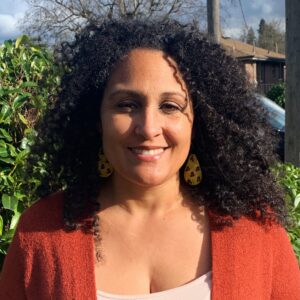 “My personal experience with ParentChild+ will last a lifetime!” Marcella shares her memories as one of many families who benefited from working with an early learning specialist through the ParentChild+ program.
“My personal experience with ParentChild+ will last a lifetime!” Marcella shares her memories as one of many families who benefited from working with an early learning specialist through the ParentChild+ program. Taylor-Corrine
Taylor-Corrine




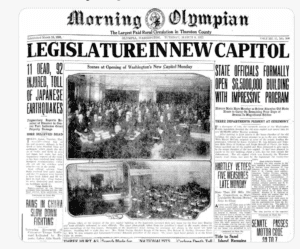 Photo Credit:
Photo Credit: 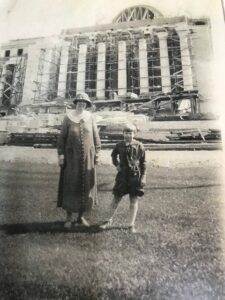 Elizabeth Varnell and Virginia (Ginna) Varnell Dunn
Elizabeth Varnell and Virginia (Ginna) Varnell Dunn Photo Credit: Erica Hallock
Photo Credit: Erica Hallock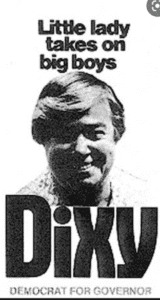 Dixy Lee Ray Campaign Poster (1976)
Dixy Lee Ray Campaign Poster (1976)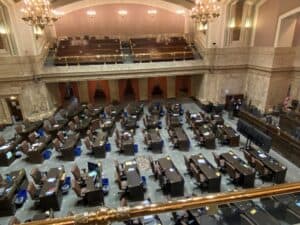
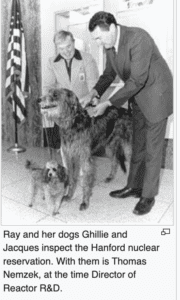 Dixy Ray and her dogs at the Hanford nuclear reservation
Dixy Ray and her dogs at the Hanford nuclear reservation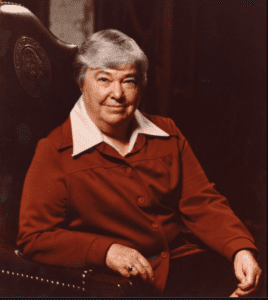 Official Gubernatorial Portrait of Governor Dixy Lee Ray
Official Gubernatorial Portrait of Governor Dixy Lee Ray
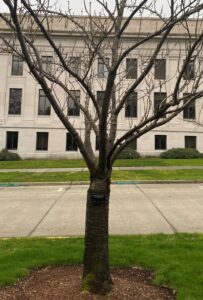

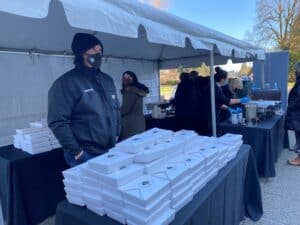
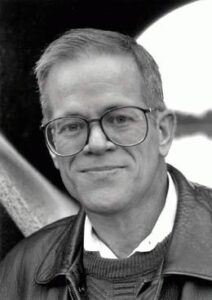
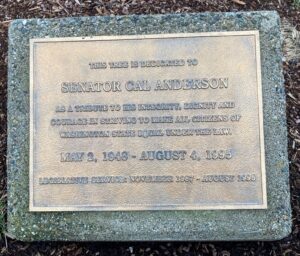

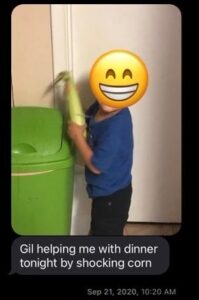

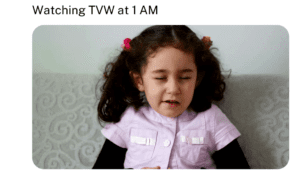
 Map of Washington Territory
Map of Washington Territory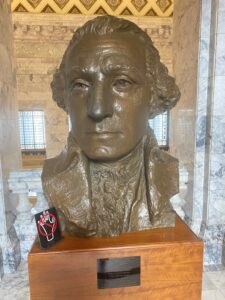 George Washington Bust
George Washington Bust


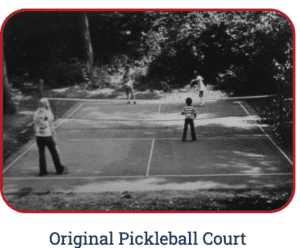
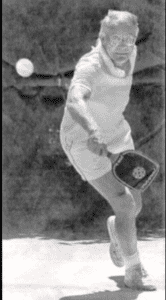 Pickleball Founder (and former WA Lt. Governor) Joel Pritchard
Pickleball Founder (and former WA Lt. Governor) Joel Pritchard